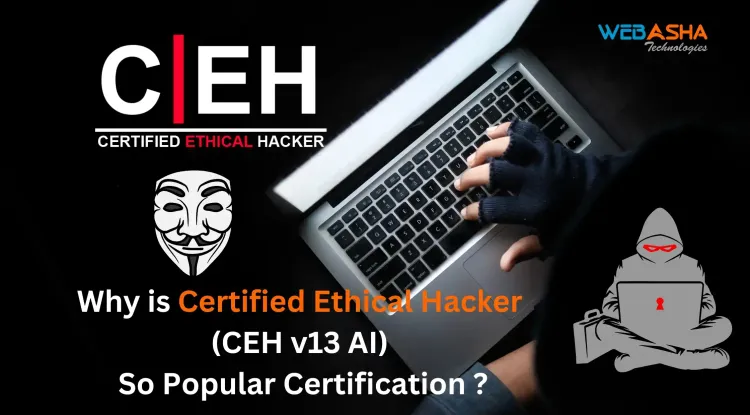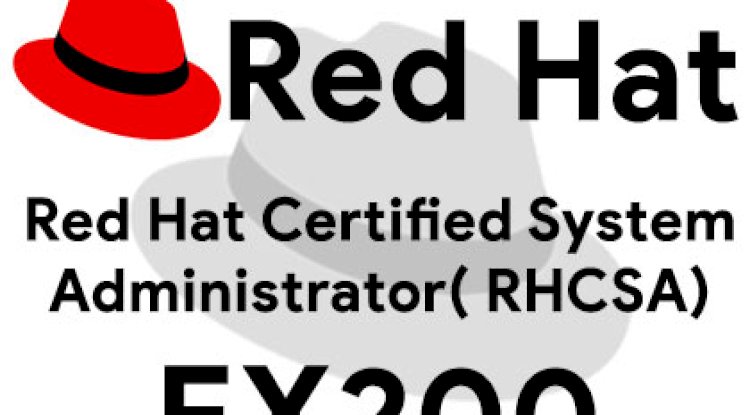Cybersecurity Training for Non-Tech Employees | Essential Guide to Protecting Your Business from Cyber Threats
Cybersecurity is no longer just the responsibility of IT professionals. Non-technical employees play a crucial role in preventing cyber threats, securing company data, and reducing human error-related breaches. Many cyberattacks, including phishing, ransomware, and data leaks, result from lack of awareness among employees. This blog explores why cybersecurity training is vital for non-tech employees, the key cybersecurity threats they should know, essential training topics, and the best ways to implement an effective cybersecurity training program. By providing regular awareness programs, phishing simulations, and clear security policies, businesses can create a security-conscious work culture that safeguards company assets and maintains customer trust.

Table of Contents
- Introduction
- Why Cybersecurity Training is Important for Non-Tech Employees
- Common Cybersecurity Threats Non-Tech Employees Should Know
- Key Cybersecurity Training Topics for Non-Tech Employees
- How to Implement Effective Cybersecurity Training for Non-Tech Employees
- Benefits of Cybersecurity Training for Non-Tech Employees
- Final Thoughts
- FAQs
Introduction
Cybersecurity is no longer just an IT department’s responsibility. In today’s digital world, non-tech employees play a crucial role in safeguarding company data and preventing cyber threats. Many security breaches occur due to human error, making it essential to provide cybersecurity training for all employees, regardless of their technical expertise.
This blog will help business owners, HR managers, and security teams understand why cybersecurity training is necessary for non-tech employees, key topics to cover, and how to implement effective training programs.
Why Cybersecurity Training is Important for Non-Tech Employees
Cyber threats are evolving rapidly, and businesses must take a proactive approach to security. Here’s why training non-tech employees is critical:
- Reduce Human Errors – Many security breaches happen due to phishing scams, weak passwords, and accidental data sharing. Training helps employees recognize and avoid such risks.
- Protect Company and Customer Data – Employees handle sensitive information daily. Understanding data protection practices helps prevent leaks and unauthorized access.
- Prevent Financial and Reputational Losses – Cyber attacks can lead to financial losses, legal penalties, and reputational damage. Well-trained employees act as the first line of defense.
- Ensure Compliance with Regulations – Laws such as GDPR, HIPAA, and PCI DSS require companies to follow strict security measures, and employee awareness is crucial for compliance.
Common Cybersecurity Threats Non-Tech Employees Should Know
Cybercriminals target employees who lack cybersecurity awareness. Training should focus on recognizing and responding to the following threats:
| Threat | Description |
|---|---|
| Phishing Attacks | Fraudulent emails that trick employees into clicking malicious links or providing sensitive information. |
| Ransomware | Malware that encrypts company files and demands a ransom for recovery. |
| Social Engineering | Manipulating employees into revealing confidential information through calls, emails, or in-person scams. |
| Weak Passwords | Using simple or reused passwords, making it easier for attackers to gain unauthorized access. |
| Unsecured Wi-Fi Use | Connecting to public or unprotected networks, which can expose company data. |
| Data Leakage | Accidentally sharing sensitive data through email, cloud storage, or unauthorized apps. |
| Physical Security Breaches | Leaving devices unlocked, allowing unauthorized personnel access to sensitive systems. |
Key Cybersecurity Training Topics for Non-Tech Employees
1. Understanding Cyber Threats
Employees should learn about common threats like phishing, ransomware, malware, and insider threats. Using real-life examples of cyber attacks makes training more relatable.
2. Safe Email and Internet Usage
- Recognizing suspicious emails and links.
- Avoiding downloading attachments from unknown sources.
- Verifying senders before sharing sensitive information.
3. Strong Password Practices and Authentication
- Using unique, complex passwords for each account.
- Enabling Multi-Factor Authentication (MFA) for added security.
- Using password managers to store and manage credentials securely.
4. Data Protection and Safe File Sharing
- Encrypting sensitive files before sending.
- Avoiding use of personal email or cloud storage for work-related files.
- Understanding data classification and handling policies.
5. Secure Remote Work Practices
With remote work becoming common, employees should be trained on:
- Using VPNs to secure internet connections.
- Avoiding public Wi-Fi when accessing company resources.
- Locking devices when not in use.
6. Social Engineering Awareness
Employees should learn how to identify and report fraudulent calls, messages, and in-person attempts to access company information.
7. Incident Reporting and Response
Employees should be encouraged to report suspicious activities immediately and know how to respond in case of a security breach.
How to Implement Effective Cybersecurity Training for Non-Tech Employees
1. Make Training Engaging and Practical
- Use real-world examples and case studies to explain cybersecurity concepts.
- Conduct interactive sessions, quizzes, and role-playing exercises.
2. Provide Role-Based Training
Different departments face different cybersecurity risks. Tailor training to employees’ specific roles.
- HR and Finance – Learn how to spot phishing emails targeting payroll and banking information.
- Customer Support – Understand data privacy regulations when handling customer data.
- Sales and Marketing – Recognize social engineering scams that exploit client information.
3. Conduct Regular Security Awareness Sessions
- Organize monthly or quarterly cybersecurity awareness workshops.
- Update employees on new cyber threats and evolving attack methods.
4. Implement a Cybersecurity Policy
- Clearly define rules for acceptable internet and device usage.
- Establish reporting procedures for suspected cyber incidents.
5. Simulate Phishing Attacks
- Conduct periodic phishing simulations to test employees’ awareness.
- Provide feedback and retraining for those who fall for fake phishing emails.
6. Provide Access to Security Resources
- Share cybersecurity newsletters, video tutorials, and best practice guides.
- Encourage employees to use cybersecurity tools like password managers and VPNs.
Benefits of Cybersecurity Training for Non-Tech Employees
| Benefit | Impact on Business |
|---|---|
| Reduced Risk of Cyber Attacks | Employees are less likely to fall for scams or make security mistakes. |
| Improved Compliance | Helps businesses meet legal and industry cybersecurity requirements. |
| Stronger Security Culture | Employees take cybersecurity seriously and actively follow best practices. |
| Cost Savings | Prevents financial losses from data breaches, ransomware, and fraud. |
| Increased Customer Trust | Customers feel confident that their data is secure. |
Final Thoughts
Cybersecurity is not just an IT responsibility—every employee plays a role in keeping a business secure. Training non-tech employees on basic security practices can significantly reduce cyber risks and protect company data. By implementing regular security awareness programs, phishing simulations, and clear cybersecurity policies, businesses can build a strong defense against cyber threats.
Investing in cybersecurity training today ensures a more secure and resilient business in the future. Start training your employees now and make cybersecurity an integral part of your workplace culture.
FAQs
What is cybersecurity training for non-tech employees?
Cybersecurity training for non-tech employees involves educating staff about common cyber threats, safe online practices, and security policies to protect company data and prevent cyberattacks.
Why is cybersecurity training important for non-technical employees?
Non-tech employees handle sensitive data, emails, and company systems, making them potential targets for cybercriminals. Training helps them recognize and respond to security threats effectively.
What are the most common cybersecurity threats non-tech employees should know?
Key threats include phishing, ransomware, social engineering, malware, weak passwords, and data breaches.
How can phishing attacks be prevented?
Employees should verify email senders, avoid clicking suspicious links, and report phishing attempts to IT security teams.
What are the best password security practices?
Use unique, strong passwords, enable multi-factor authentication (MFA), and store credentials securely in a password manager.
How does social engineering affect businesses?
Cybercriminals use psychological manipulation to trick employees into revealing sensitive information, often through phone calls, emails, or in-person interactions.
What role do non-tech employees play in cybersecurity?
Employees act as the first line of defense by identifying suspicious activities, following security policies, and reporting incidents promptly.
How can businesses implement cybersecurity awareness training?
Businesses should provide regular workshops, phishing simulations, interactive e-learning sessions, and clear cybersecurity guidelines.
What is multi-factor authentication (MFA), and why is it important?
MFA adds an extra layer of security by requiring multiple forms of verification, such as a password and a one-time code.
Can remote employees also benefit from cybersecurity training?
Yes, remote employees must learn safe VPN usage, password management, and best practices for working on unsecured networks.
What are the risks of using public Wi-Fi for work?
Public Wi-Fi is unsecured, making it easy for hackers to intercept data and steal credentials. Employees should use VPNs when working remotely.
How often should cybersecurity training be conducted?
Companies should provide quarterly or annual cybersecurity awareness training and update employees on new threats.
What are phishing simulations, and how do they help?
Phishing simulations are fake phishing attacks designed to test employees’ ability to recognize scams and improve their security awareness.
Should non-tech employees be aware of data encryption?
Yes, they should understand the importance of encrypting sensitive data before sharing or storing it.
How does cybersecurity training improve compliance with regulations?
Many industries require GDPR, HIPAA, or PCI DSS compliance, and training ensures employees follow legal security guidelines.
What should employees do if they suspect a cyber attack?
They should immediately report the incident to IT security teams and avoid interacting with suspicious files or emails.
Are cybersecurity awareness posters and emails effective?
Yes, regular visual reminders and email tips reinforce cybersecurity best practices and keep employees alert.
What is ransomware, and how can employees prevent it?
Ransomware is malware that encrypts company data and demands payment for recovery. Employees should avoid suspicious links and back up files regularly.
How can employees identify a secure website?
Check for HTTPS in the URL, a padlock symbol, and verify the legitimacy of the website before entering sensitive data.
What should employees do with old or unused passwords?
They should regularly update and delete old passwords and avoid reusing them across multiple accounts.
How can businesses measure the success of cybersecurity training?
Success can be measured through reduced phishing incidents, employee quiz scores, and simulated attack response rates.
What are insider threats, and how do they impact cybersecurity?
Insider threats occur when employees or contractors misuse their access to company data, either intentionally or accidentally.
How can companies ensure employees follow cybersecurity best practices?
By creating a strong security culture, rewarding good practices, and enforcing clear policies.
What are the risks of using personal devices for work?
Personal devices may lack security updates and antivirus software, increasing the risk of data breaches.
How can organizations create a cybersecurity policy for employees?
A cybersecurity policy should outline acceptable use, password management, reporting procedures, and safe work practices.
What is the importance of cybersecurity awareness in HR and finance departments?
These departments handle highly sensitive employee and financial data, making them prime targets for cybercriminals.
Can small businesses also benefit from cybersecurity training?
Yes, small businesses are frequent targets of cyberattacks, making employee awareness essential.
How can cybersecurity training be made more engaging?
Using real-life case studies, role-playing exercises, and gamified learning makes training sessions more interactive.
What are the best cybersecurity tools for non-tech employees?
Recommended tools include password managers, antivirus software, VPNs, and email security filters.
How can employees balance security with productivity?
By integrating security best practices into daily routines, such as using secure file-sharing tools and keeping software updated.












![Top 10 Ethical Hackers in the World [2025]](https://www.webasha.com/blog/uploads/images/202408/image_100x75_66c2f983c207b.webp)

![[2025] Top 100+ VAPT Interview Questions and Answers](https://www.webasha.com/blog/uploads/images/image_100x75_6512b1e4b64f7.jpg)









